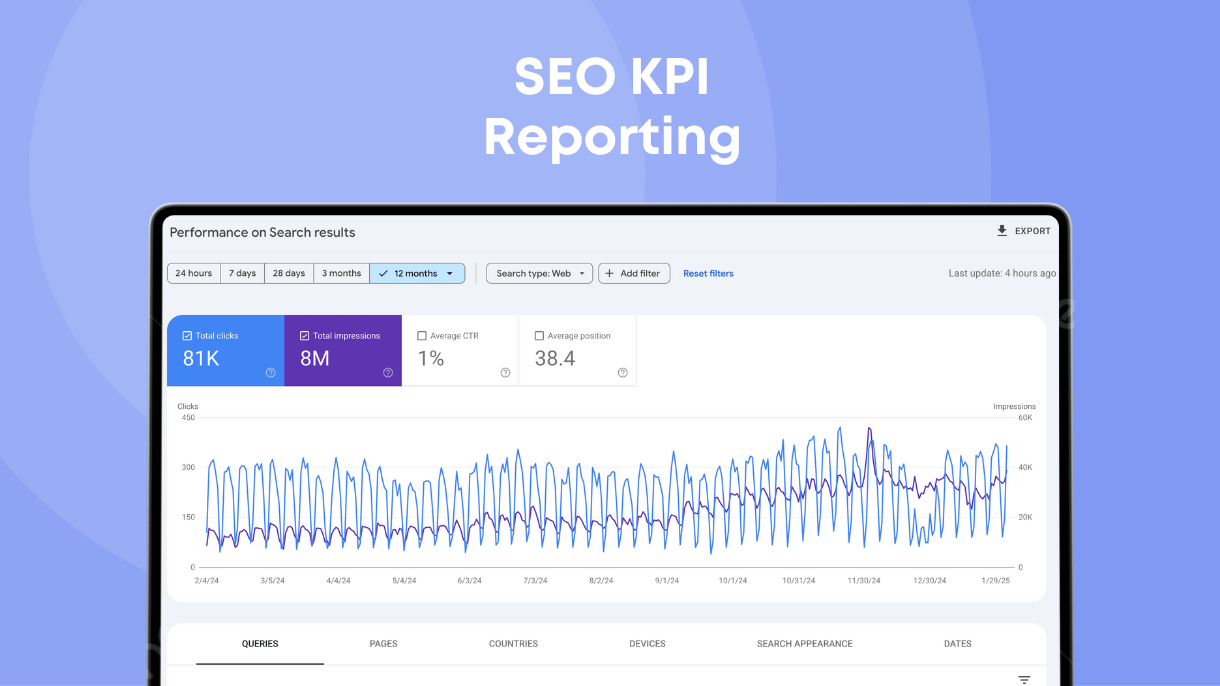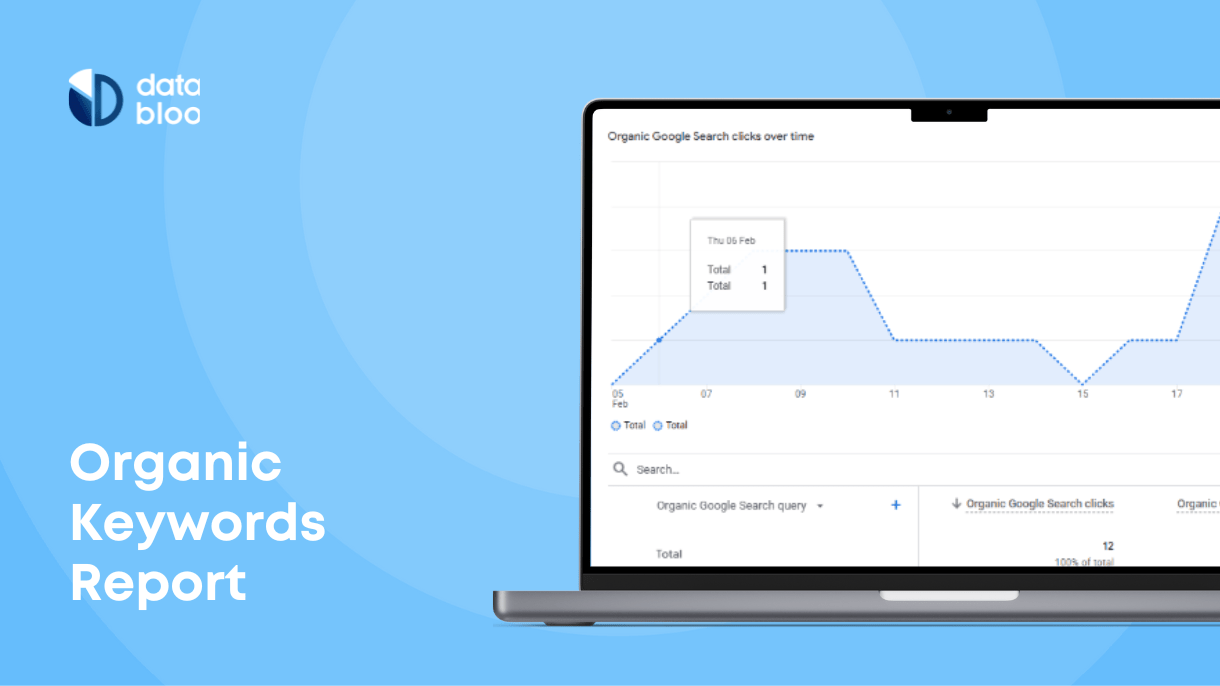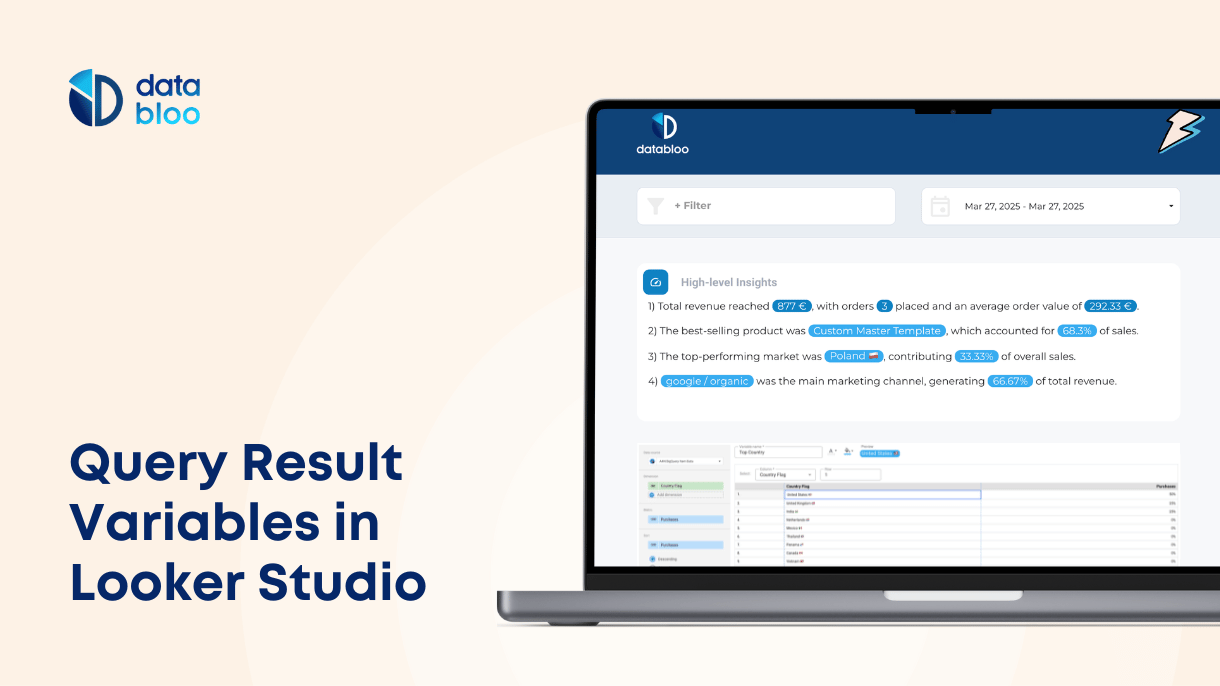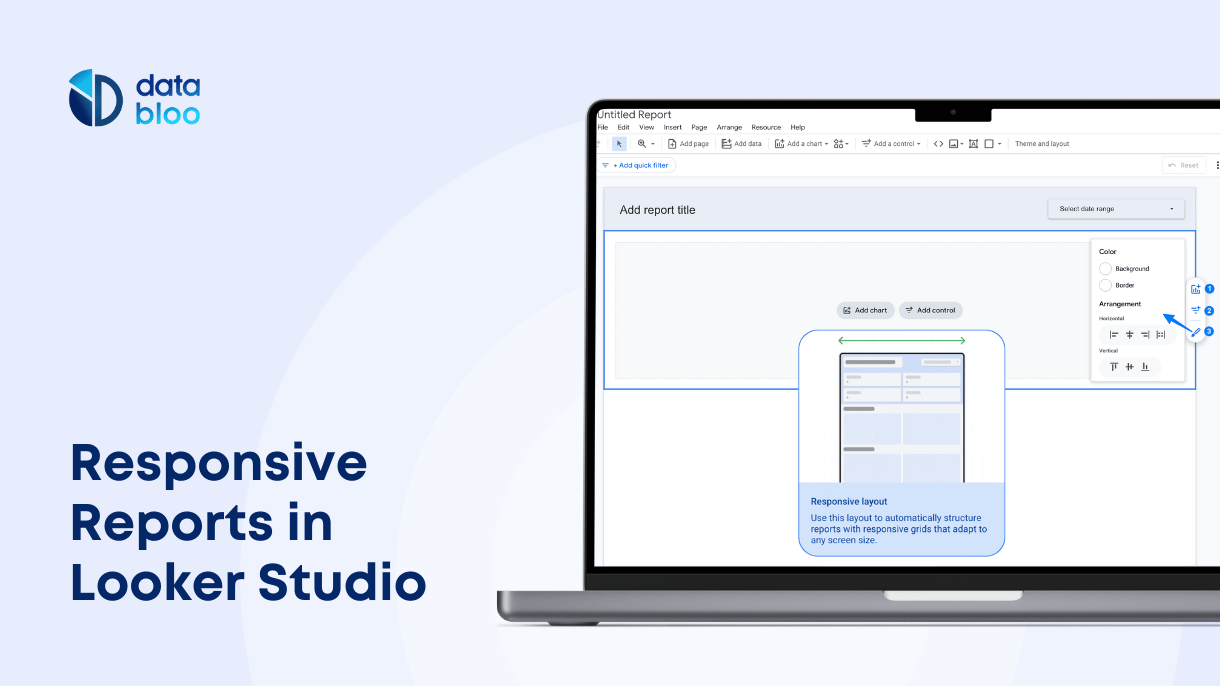Table of Contents
In SEO, every search, click, and conversion is a result of multiple online strategies working together.
But that doesn’t mean you can’t have a detailed understanding of how your SEO campaigns perform.
SEO KPIs (key performance indicators) are metrics that highlight the impact of different SEO efforts. By monitoring SEO KPIs, you can help stakeholders understand the importance and impact of your SEO initiatives, scale efficient SEO campaigns and eliminate poorly performing ones.
Let’s look at 7 most crucial SEO KPIs you should track and use to identify current areas of success or areas of potential improvement.
Before we dive into KPIs, however, it’s important to learn how to tell important SEO KPIs from not important metrics.
Important vs. Unimportant SEO KPIs
Often, we can fall into the trap of monitoring all metrics—even those that don’t align with our business goals.
Tracking some SEO KPIs can misguide your digital marketing efforts and give you suboptimal results.
For example, keeping a close tab on the sheer volume of the articles you publish may result in diluted content that fails to attract the right audience.
Other unimportant SEO KPIs that you want to avoid are keyword density and the number of social media followers. Keyword-stuffed content can be penalized, while increased followers on the socials doesn’t always mean a larger audience.
It’s worth mentioning that in different business environments some SEO KPIS are more important than the others.
What Makes an SEO KPI Important?
The key focus should be on a KPI’s alignment with your business objective and overall SEO strategy. For example, conversions directly contribute to your business growth, while content quality and efficiency speaks to your website’s relevance, authority, and rank.
1. Conversions
Conversions are the specific actions you would like your website visitors to take, such as making a purchase, signing up, watching a video, loading out a cart, etc.
Organic conversions are one of the important KPIs in SEO. With conversions, you’ll know if you’re generating leads, making sales, growing your email and subscription list, or generally making any money.
Conversions also measure the return on investment (ROI) of your SEO efforts and determine the effectiveness of your SEO strategies.
How to track conversion KPIs
You can track your website’s conversions with Google Analytics 4(GA4). And yes, setting up conversion tracking in GA4 can be complex, but it is necessary.
Ensure you precisely track and capture the right metrics—e.g., average orders for an ecommerce website or trial sign-ups for a subscription-based software.
To get accurate conversion data on your GA4 account, set the data-driven attribution as your default model (i.e., Admin > Attribution settings > Reporting attribution model). Also, your website should have at least some hundreds of conversions per month to give Google sufficient data for a robust analysis.
For a marketing team, getting GA4 data in a snapshot is crucial for quick insights and efficient decision making— especially when presenting your SEO data to non-technical people.
A tool like Data Bloo shows you a snapshot of SEO conversions data like items viewed, number of first visits, predicted top spenders, added to cart, etc.
Here are ways you can compile and present your SEO conversion data:
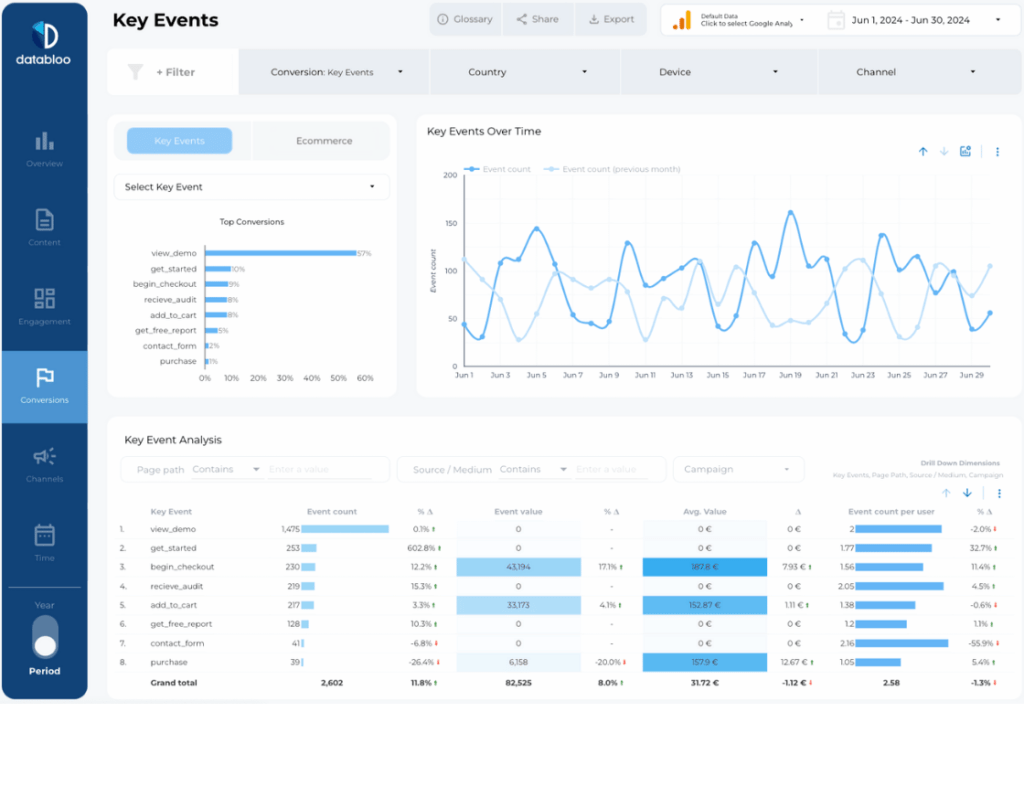
When GA4 is simplified, you can note some real-time insights and get accurate SEO performance data in a better user interface which anyone can understand.
2. E-commerce SEO KPIs
e-commerce KPIs give you insights into customer behavior and help you understand the impact of your SEO efforts on your online store’s performance.
They are a quantifiable way to evaluate your business’s performance and growth. You can track your online store’s traffic, revenue, customer behavior, user experience, etc.
How to Track Ecommerce KPIs
Google Analytics 4 (GA4) helps you set up and track your online events.
On your GA4 account, click on Admin> Create Property> Events> Enhanced e-commerce> Enable
While GA4 provides powerful insights into your e-commerce performance, interpreting its data and creating custom reports for quick snapshot information can sometimes be challenging.
For example, you may not understand how specific SEO efforts contribute directly to e-commerce actions such as product views, add to cart, and purchases. This information is crucial for understanding user behavior on your e-commerce site and the connection between SEO pages with e-commerce pages .
You can integrate your GA4 data with custom dashboards such as Data Bloo and track and understand your e-commerce KPIs more effectively.
Here are some important ecommerce KPIs that you can correlate with SEO data:
- Store overview, including total revenue, ecommerce conversion rate, the number of transactions, and the average order value.
- Shopping behavior such as the number of sessions, product views, checkouts, cart abandonment, etc.
- Product performance KPIs like item revenue, quantity average price, total items sold, or even purchase to view rate.
- Sales performance KPIs such as item revenue and quantity.
- Product list performance, including item list views, items added to cart, item list clicks, etc.
Here’s an example of Data Bloo Ecommerce Overview dashboard that showed most important ecommerce metrics in real time:
Shopping Behavior Analysis
3. Keyword Rankings
Keyword rankings show the organic ranking position of your webpage in search results for specific keywords or phrases.
As an SEO KPI, keyword rankings correlate with visibility and traffic. They give detailed insights into the specific keywords driving your traffic, and their impact on your overall SEO strategy.
How to Track Keyword Rankings KPIs for SEO
Google Search Console (GSC) is one of the most popular free and accurate sources of keyword rankings data. Using GSC data, you can see the actual queries that lead users to your site.
On your Google Search Console account, go to Performance> Queries. You’ll see keyword metrics like clicks, impressions, average CTR, and average position.
Some pages of your website may be ranking for hundreds of different keywords. Unfortunately, Google Search Console limits the number of visible queries to 1000, but you can integrate Google Search Console with custom reporting solutions for more granular insights.
Understanding the keywords that generate most of your business helps you focus your SEO efforts. For example, Data Bloo Keyword rankings KPIs include:
- Keyword overview. You can know how your keywords have ranked over time in different countries, devices, and the keyword length.
- Keyword ranking. You get different keyword positions and search volume, including unique keywords that may not be visible on your GSC data.
As an SEO KPI, you understand the most relevant and high-impact keywords to guide your optimization efforts and find out how well your site is positioned for those crucial keywords. Track your most important keywords and pages to refine your content and update it using keyword data to remain competitive in SERPs (Search Engine Results Page).
4. Search Visibility
Search visibility, also known as organic visibility or SERP visibility, is an indication of how your website is visible on search results.
Often expressed as a percentage, it gives you the proportion of times your website shows up compared to the total search volume for specific terms.
Search visibility is one of the most crucial SEO KPIs to track. It directly shows your SEO efforts and the likelihood of your website attracting organic traffic for business growth and reach.
The higher your search visibility, the bigger your market share.
How to Track Search Visibility KPIs
Google Search Console (GSC) tracks and displays your Search visibility with its Performance report. You can track your site’s total clicks, impressions, average click-through rates (CTR), and average positions for specific queries.
But, GSC only shows you your SERP visibility against 10 blue links. More search visibility KPIs like featured snippets, SERP Features, and images can be tracked with a commercial SEO tool like Ahrefs Rank Tracker or Semrush position tracking.
You can get GSC data in a dashboard with details like Search traffic, unique pages, and unique keywords to get more insights on Search visibility.
Here’s an example of Search visibility data dashboard.
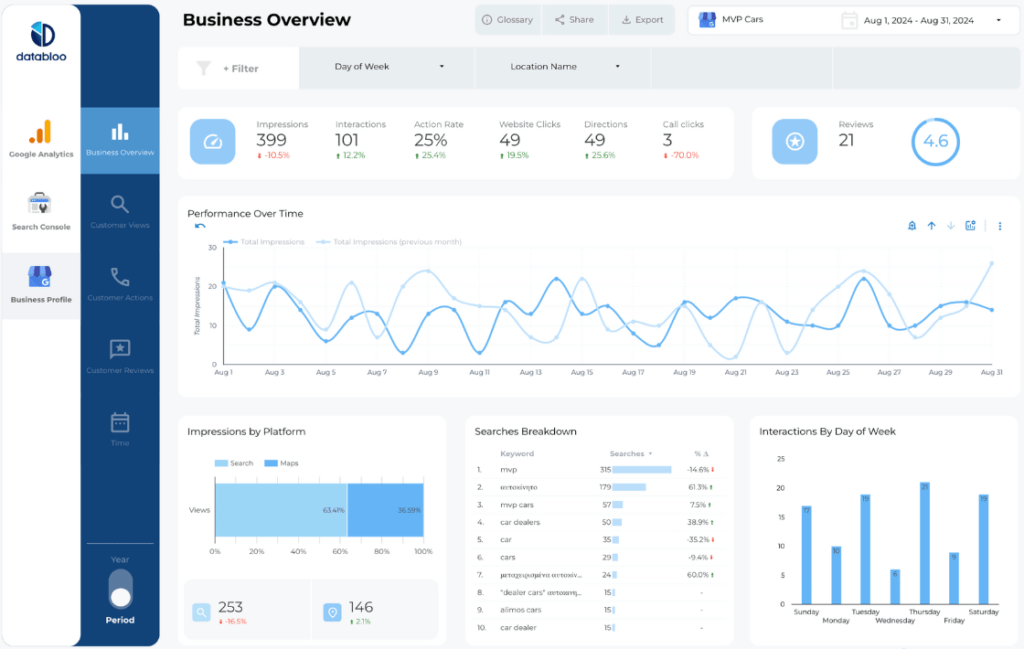
Sometimes your SEO efforts can lead to unexpected results across other channel, In GSC, you can see which ones of your article end up in a “Discovery” and “News”
5. Local SEO KPIs
Local SEO is a critical SEO KPI that shows how visible your website is for local searches in you targeted geography.
Tracking your Local SEO gives you insights into attracting nearby customers to your business’s physical locations. You can improve visibility in local search results and drive foot traffic to your business.
How to track Local SEO as a KPI
To track you’re the performance of your SEO efforts on Local SEO, monitor the following:
- Google My Business (GMB) listing for visibility, engagement, and local audience interaction.
- Online review platforms
- Local citations for consistent information
- Local keyword listings, such as location-specific keywords
- When and how customers view your business on Search or Google maps
- What customers do after finding your local listing
Tracking these local SEO parameters can be challenging and time-consuming because of the diverse data sources and metrics involved.
Data Bloo Local SEO Mater Template aggregates data from Google Analytics 4, Google Search Console, and Google My Business. You get Local SEO insights such as the performance of your GMB profile, how customers view your business on Google Maps and Search, and even top customers’ reviews.
A snapshot of all your Local SEO data gives you a holistic view of your business’s visibility within the local market. You measure the impact of your SEO efforts and refine your campaigns to attract nearby customers better.
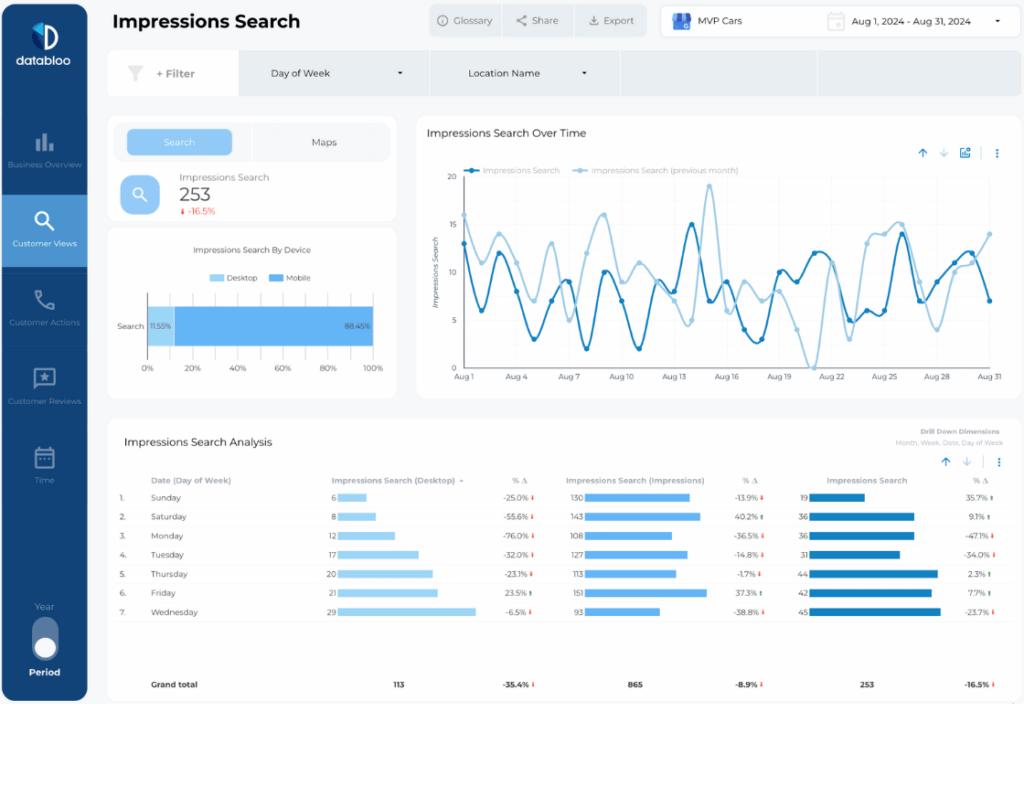
You can view your customers’ actions after finding your store on Local SEO.
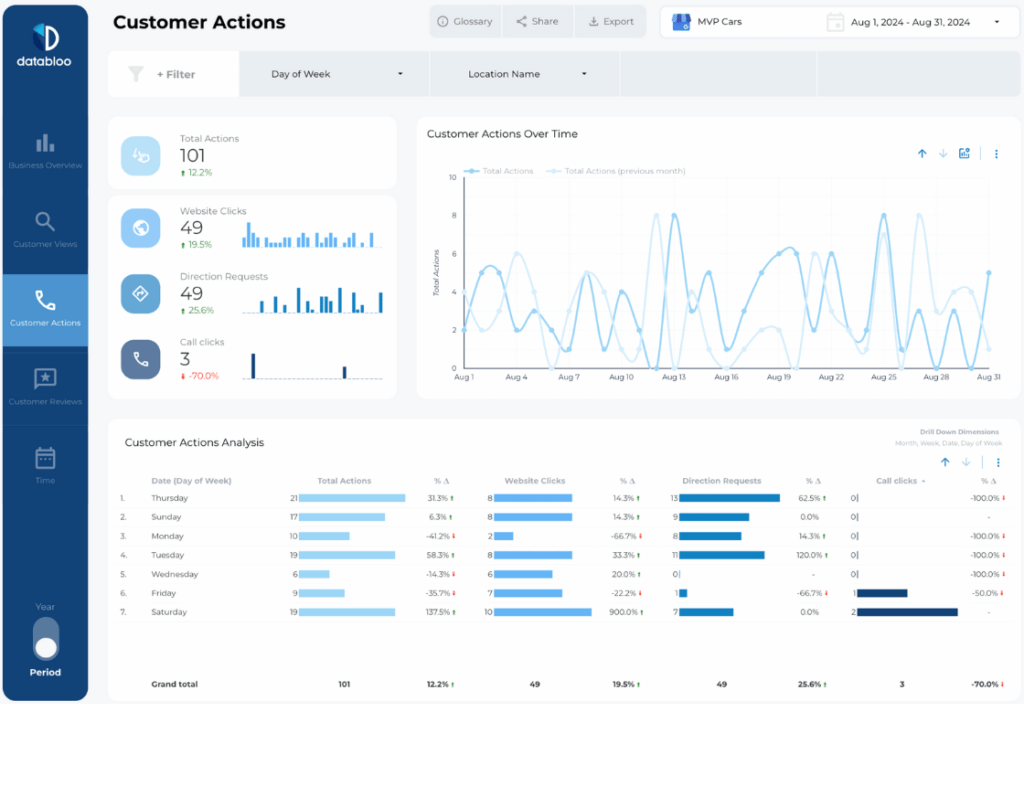
6. Customer Lifetime Value
Customer Lifetime Value (CLV or LTV) refers to the predicted net profit you can earn from a customer throughout your entire relationship.
While CLV is not a direct SEO metric, it can be related to SEO efforts in several ways. For example, SEO plays a significant role in attracting organic traffic to a website. SEO also determines customer engagement and the quality of traffic coming from organic search, which influences CLV.
In other words, some SEO articles might be attracting clients with higher CLV than others. For example, an article that serves seasonal search intent, e.g. (“X best software with free trial”) will attract plenty of trial customers, whereas an article that compared two different tools in depth will likely attract more long-term clients.
With proper conversion attribution, you can always tell which SEO articles generate higher CLV customers and expand your strategy on similar topics.
How to Track Customer Lifetime Value KPIs
Here are some steps you can use to track your Customer Lifetime Value as an SEO KPI:
- Identify your customer conversion metrics, e.g., ecommerce transactions, email sign-ups, etc.
- Use Google Analytics to track your customer behavior and attribute your customer conversion to the right channels like organic search or Paid ads.
- Segment your audience based on their traffic source, including organic search.
- Calculate your CLV by considering factors like average purchase value, purchase frequency, and customer lifespan.
CLV= (Average Purchase Value× Purchase Frequency× Customer Lifespan)
A tool like WebFX or Sniffie can help you calculate your customer lifetime value faster.
7. Content Engagement Metrics
Content engagement in SEO refers to the level of interaction and interest that users show towards the content on your website. Good content attracts visitors and encourages them to explore different pages on your site.
Content engagement is determined by factors such as content relevance, quality, readability, user experience, etc.
Content complements other SEO efforts to grow your website traffic, boost keyword rankings, and increase your conversion rates.
For SEO, your content should be optimized for search engines and valuable enough to resonate with your audience and convert them into customers.
How to track content engagement KPIs
Here are some KPIs to track to determine your content engagement:
- Time on page. Longer average time on page may indicate that users find the content valuable and engaging. Hubspot recommends 2-4 minutes of dwell time
- Scroll depth. Deeper scroll depth suggests more engagement with the content.
- Bounce rate. It should be below 40%.
- Click-Through Rate (CTR). A rate above 3% is considered good for organic searches.
- Backlink profile. High-quality backlinks boost your content’s authority.
- Social metrics. Shares, comments, and reviews- Indicate engagement and interest
Consider using a custom dashboard for reporting that can combine data from several sources and show you a summary of the performance of each piece of content you produce across several platforms. This includes your traffic sources, engagement on your content pages, different content groups on your site, and how each is performing.
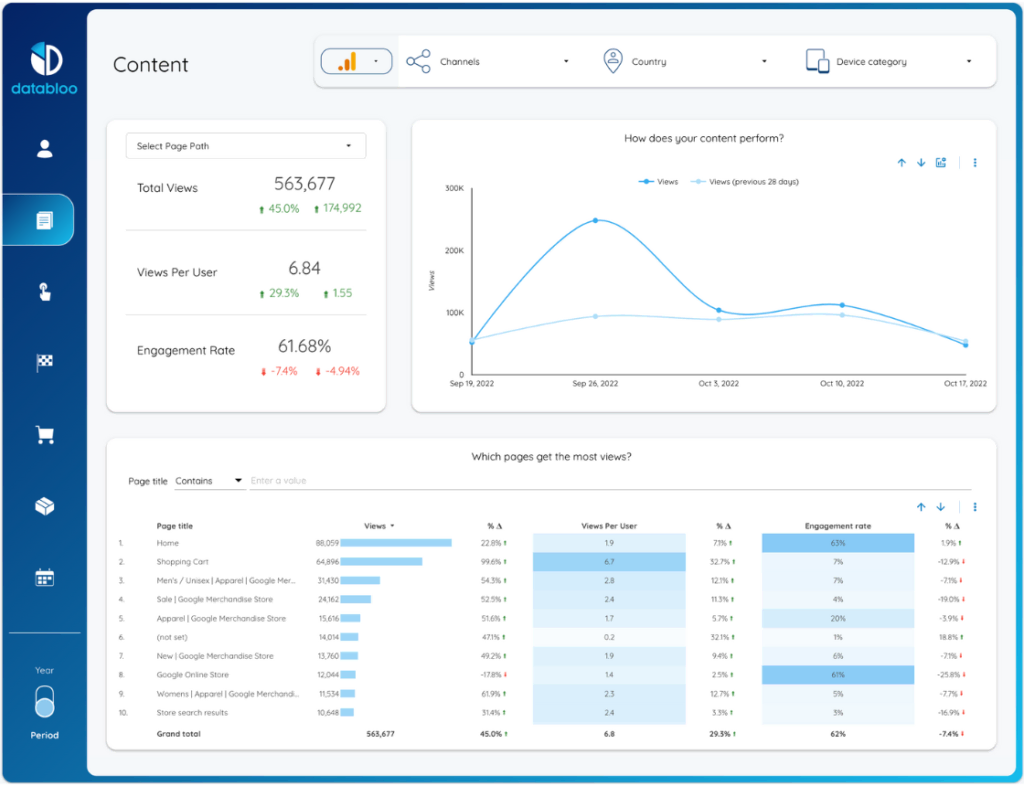
Get Outstanding SEO Results By Focusing On The Right SEO KPIS
Selecting the right SEO metrics to track is crucial to developing an effective marketing strategy.
To win at SEO, you need to identify the relevant metrics and determine which one deserves primary attention. The above KPIs help you formulate your own metrics that align to your unique objectives.
Also, most KPIs are not universal benchmarks but rather a starting point for customization.
With Data Bloo templates, you can comprehensively analyze SEO data and showcase different KPIs.
You can also document the progress of your SEO efforts in a way that different stakeholders ( even those with zero SEO and data knowledge) easily understand.

